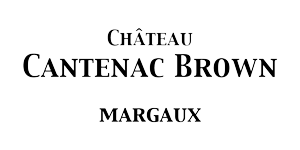As summer approaches, the preparation for harvest is beginning. This is a crucial step for every winegrower: the grape harvest takes place only once a year. It is therefore necessary to ensure a perfect quality in the vineyard. Moreover, the harvest at Château Cantenac Brown is often the occasion of a particular effervescence. In this article, we give you the inside scoop on the harvest before we take you there in a few months.
When does the harvest start?
The date of the harvest varies each year. Indeed, they are triggered at the ideal time to allow a perfect maturity of the grapes. It is a crucial step in the development of a great wine. Moreover, the date of the harvest varies according to the grape varieties. Merlot, Cabernet Sauvignon and Cabernet Franc do not have the same ripening dates and it is therefore impossible to harvest them simultaneously. Finally, the dates of the harvest vary according to the parcels of the chateau.
At Chateau Cantenac Brown, harvesting usually takes place in late September or early October. For example, in the 2019 vintage, the harvest took place :
- From mid to late September for Merlot;
- October 1st for Cabernet Franc;
- And at the beginning of October for the Cabernet Sauvignon.
You can also find all the harvest dates for each of our wines on their descriptive sheets.
How to choose the date of the harvest?
The choice of the date of the harvest and the execution of the harvest are two major components for a great vintage. The choice of the date is determining for the continuation of the wine adventure.
Choosing an ideal date: a determining factor of quality
To decide the date of the harvest, it is necessary to study the maturity of the grapes. Indeed, harvested too early, the grapes could be acid and not produce enough alcohol. On the other hand, harvested too late, the aromas will be lost and the wine will tend to be too full of alcohol. Finding the right balance is a perilous exercise. As a general rule, we can estimate that the harvest will take place about 100 days after the first flowers appear.
However, this harvest date varies greatly depending on the characteristics of the grape variety, the climate of the vintage, and the local characteristics (geological or climatic). The ripeness of the grapes is therefore studied every day by the château’s teams in order to determine, with the greatest precision, the ideal moment for the harvest.
In order to choose this moment, the first examination is always gustatory. Tasting the grapes generally gives a good first indication of their level of ripeness. In addition, we regularly carry out laboratory tests to validate the perfect level of maturity.
The need for excellence
The dates of maturity of the grapes can vary according to the grape varieties and the plots. However, once a harvest is started on a plot, it is necessary to be very quick to ensure that all the berries are harvested in a very short time. This discipline allows us to ensure the homogeneity of the maturities but also to respect the choices of the domain.
Thus, in this intense period, it is necessary to make the choice of excellence in the organization of the harvest. The choice of excellence allows a perfect expression of the power of the earth and a deep respect for the terroirs of the Margaux and Cantenac plateaus that we find in the bottles of Château Cantenac Brown.
How to do the harvest?
Participating in this event is often the experience of great wine lovers and young people in search of discovery. To participate, we recommend that you contact the Châteaux or the service companies directly. Of course, you will have to be highly motivated to participate in this particularly tiring work.
Before you head out to the vineyards, you’re probably wondering: what to wear to the harvest? There is no secret to this answer. In hot weather, a tee shirt (white to avoid heat retention) and a hat will be your allies. In case of rain, a raincoat will be necessary. In any case, boots will normally be your best allies.
What does late harvest mean?
The term “vendanges tardives” (late harvest) does not refer at all to the Bordeaux vineyards. However, they are very common in Alsace. As indicated, they consist in waiting before picking the grapes. This waiting leads to a higher concentration of sugar thanks to the development of the noble rot (Botrytis Cinerea). This process is also used in the production of Sauternes for example.


